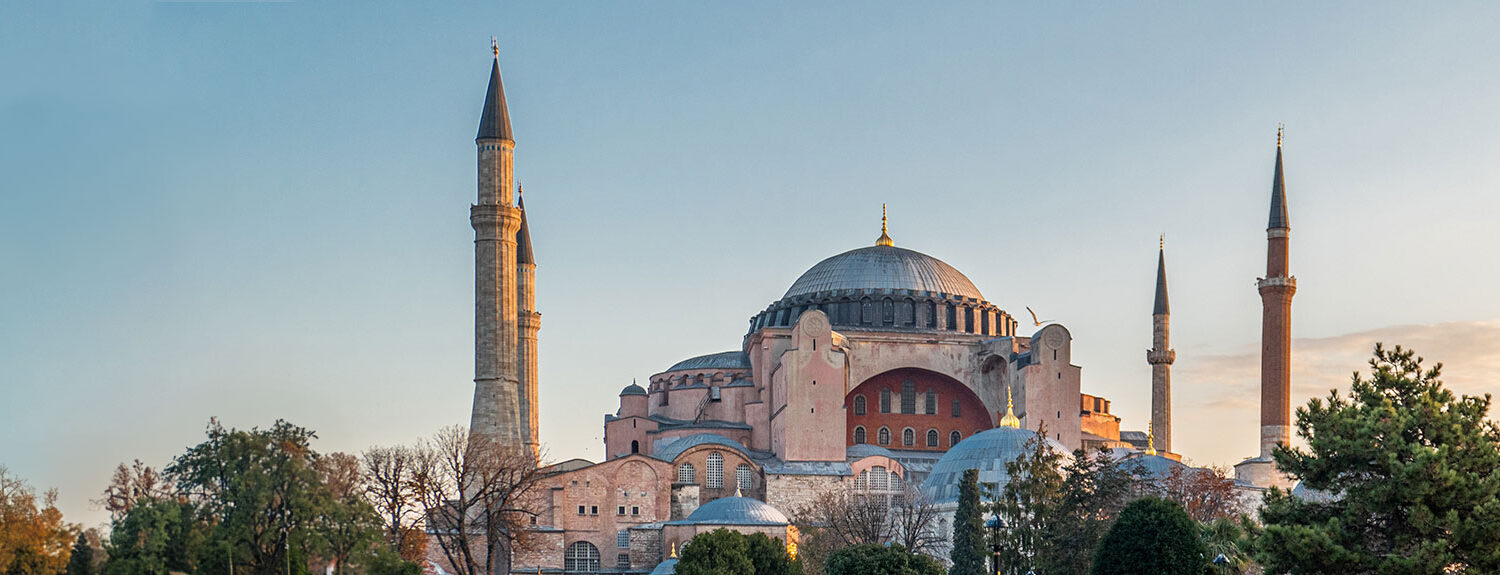The Hagia Sophia Mosque of Istanbul, a living monument to changing times, is a work of architecture that unites people from all eras and places. This enormous structure represents the city’s multilayered cultural past through its unique mosaic of history, religion, and art. Hagia Sophia, first a cathedral, then a mosque, then a museum, and now again a mosque, tells the story of a transition that mirrors Istanbul’s own.
Located in Istanbul’s Sultanahmet district, the Hagia Sophia Mosque is close to other iconic spots, including the Blue Mosque and Topkapi Palace. This masterpiece of Byzantine architecture dates back to the reign of Emperor Justinian I, who ordered its construction between 532 and 537 AD. Anthemius of Tralles and Isidorus of Miletus, two prominent architects of their day, were responsible for the design of this impressive building.





After the Ottoman conquest of Constantinople in 1453, the Hagia Sophia was transformed into a mosque with the installation of Islamic architectural elements such as minarets, a mihrab, and a minbar. However, as part of Ataturk’s secularizing policies of 1935, Hagia Sophia was transformed from a place of worship into a museum. Then, in the year 2020, the Turkish government transformed it back into a mosque.
Visitors to the Hagia Sophia will be instantly amazed by the impressive and unusual blend of Byzantine and Ottoman architectural styles that were used to construct the building. On the inside, on the other hand, is where one really finds themselves taken aback. The enormous dome serves as the primary focal point, and it seems to float in the air above the main hall as a result of a remarkable configuration of pendentive and semi-domes that was revolutionary for its day.
The interior of Hagia Sophia is covered with Islamic calligraphic roundels and Christian mosaics representing saints, emperors, empresses, and religious themes. This truly highlights the cultural and theological shifts that have taken place inside the structure throughout time. The monument also has a library (Mahmut I’s Library) and the tombs of many Ottoman sultans, both of which are open to the public.
What does the Hagia Sophia represent, exactly?
The Hagia Sophia represents the coming together of cultures and the merging of religions. It exemplifies the continuity and transformation of history between the Byzantine and Ottoman Empires. It is more than simply a monument; it is a testimony to Istanbul’s complex past since it is a site where Christian and Islamic components cohabit, embodying the possibility of interfaith cooperation.
What happened to the Christian mosaics?
The mosaics were not destroyed but were plastered over after the Ottoman conquest. Many of them have been repaired, and they are now on display.
Is the Hagia Sophia a church, a museum, or a mosque now?
After being a museum beginning in 1935, the Hagia Sophia was converted into a mosque in 2020.
Do non-Muslims get access to the Hagia Sophia?
The Hagia Sophia is open to the public, and non-Muslims are welcome to visit at any time save for the five daily prayers.


Visitors are reminded that Hagia Sophia is a place of prayer and asked to stick to Islamic traditions appropriately. It is required that people dress modestly; ladies should wear something to cover their heads and other parts of their bodies except their hands and faces, and males should wear long pants. Before entering the designated prayer space, guests are required to remove their shoes. The maximum amount of silence that can be achieved should be observed.
Visiting Tips
Cover photo (retouched) by Lewis J Goetz


